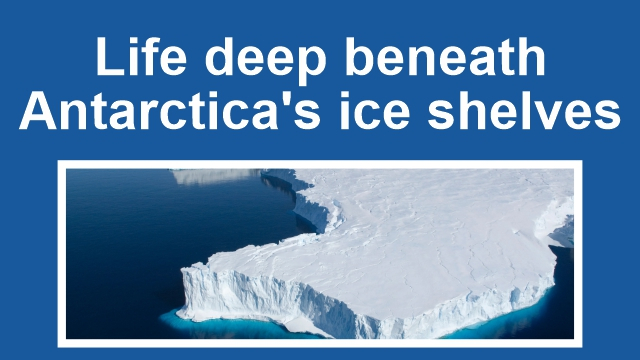Comprehensive News & Analysis
11:49:17
Life deep beneath Antarctica's ice shelves
Context
Researchers have accidentally discovered life under the ice shelves of Antarctica in extremely cold and harsh conditions. The discovery has left many of them baffled as it contradicts earlier theories of non-survival life in such extreme conditions.
Key Highlights
-
Scientists have discovered sessile sponges — a pore bearing multicellular organisms and other alien species — attached to the sides of rock beneath the ice sheets.
-
The unidentified species are estimated to be related to sponges, ascidians (sea squirts), hydroids, barnacles, cnidarian or polychaete. All of these look like bristle worms.
-
Scientists used borehole cameras and recorded 16 sponges and 22 unidentified species attached to a rock, away from the sunlight.
-
The team identified one stalked sponge with 15 non-stalked ones. As many as 22 unidentified stalked organisms were also captured in images captured.
-
Scientists are yet to discover how these organisms access food. Scientists argued that they would use Environment Deoxyribonucleic acid (e-DNA) technology in future to identify the organisms.
-
The images of the rock with sponges were recorded by drilling through two boreholes in the Filchner-Ronne Ice Shelf, the second-largest ice shelf of Antarctica, which was 260 kilometres from the open water shelf.
-
The drilling operation was carried out by researchers at British Antarctic Survey, the United Kingdom’s national Antarctic operation.
-
-
Till now, scientists believed that sea life decreased with increase in the depth of the Antarctic ice floor. The new discovery has now broken the assumed trend and challenged scientists to re-examine their theories about life beneath the ice shelves of Antarctica.
-
The presence of the recorded sessile and probable suspension community so deep under the ice shelf raises many ecological questions. Researchers still do not have practical samples to study how these organisms are living under extreme conditions and how they feed.




